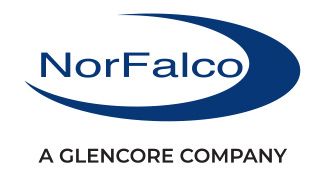Accident prevention
While sulfuric acid's reactive properties make it invaluable in numerous industrial processes, its corrosive and reactive properties makes it extremely hazardous when it comes in contact with organic substances, such as the sugars, fats and proteins that make up human tissue.
Prompt emergency measures can help minimize the effects of an accidental burn, but the goal is prevention by consistently adhering to established safe operating procedures.
Dilution
Acid's reactive and corrosive nature and strong affinity for water create a special hazard when acid is being diluted. Although in daily life it comes naturally to add water to dilute a substance, you should never add water to sulfuric acid.
The first drops of water entering the acid will be attacked so ferociously they will boil, spattering undiluted acid out of the vessel. Instead, when diluting, always add the acid to the water slowly while stirring. The larger volume of water will absorb and dissipate the heat generated by the reaction.
Reactivity Hazards
Sulfuric acid by itself is not flammable. However, it will react with most metals, especially when dilute and hydrogen gas (extremely flammable and explosive) may be generated. Strict adherence to no-smoking rules and the use of hydrogen meters, spark-proof tools and inspection lamps is essential, especially if any activity is planned for the tank or piping system that may cause sparking (e.g., welding, hammering or cutting).
Sulfuric acid has a strong affinity for water and will react violently and generate heat when coming into contact with water or if mixing different strengths of sulfuric acid.
Sulfuric acid will react violently with alkaline solutions, metal powders, carbides, chlorates, fulminates, nitrates, picrates and strong oxidizing, reducing or combustible organic materials, all with the resulting evolution of heat and possible explosion hazard. Extra care and attention should be paid when acid is in a confined tank/container or vacuum truck to ensure their contents last contained are compatible or the tank has been washed and purged.
Sulfuric acid mist is a human carcinogen and good ventilation must be provided to keep mist concentrations below the exposure limits (0.2 mg/m3). Avoid breathing sulfuric acid mist and wear approved respiratory protection if adequate ventilation cannot be provided.
Hazardous gases are evolved if sulfuric acid comes in contact with chemicals such as cyanides, sulfides and carbides.
-
More information
See NorFalco SDS for more detailed information regarding hazards and compatibilities.View more
